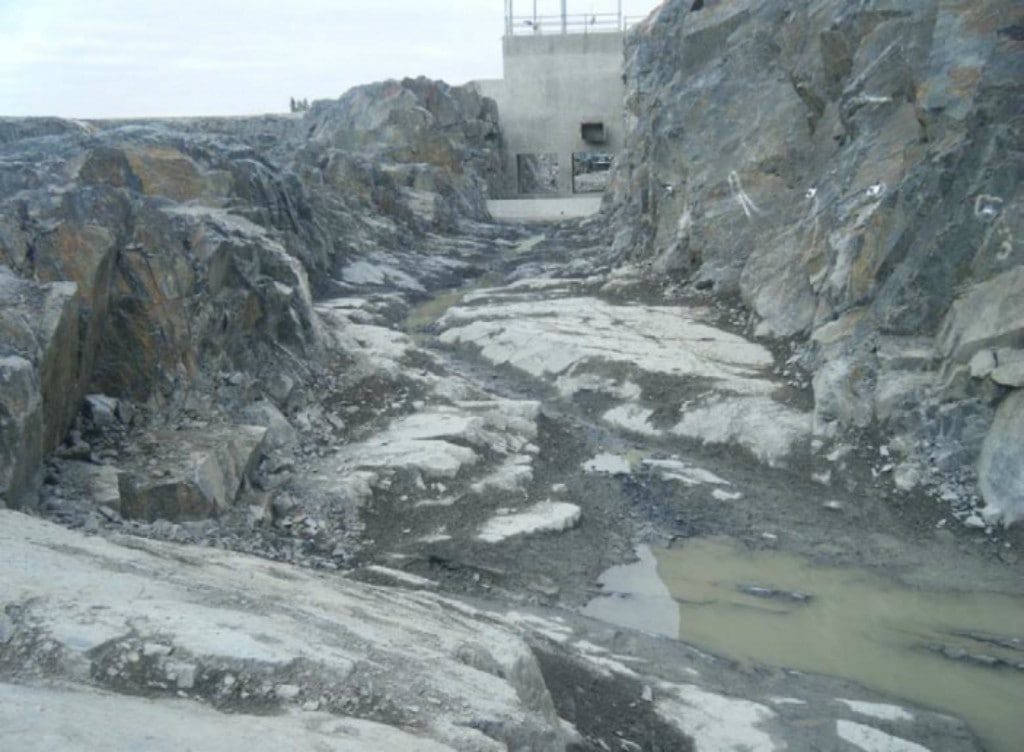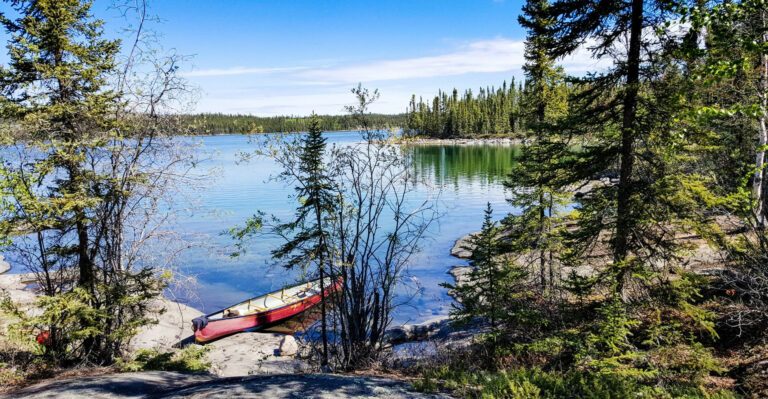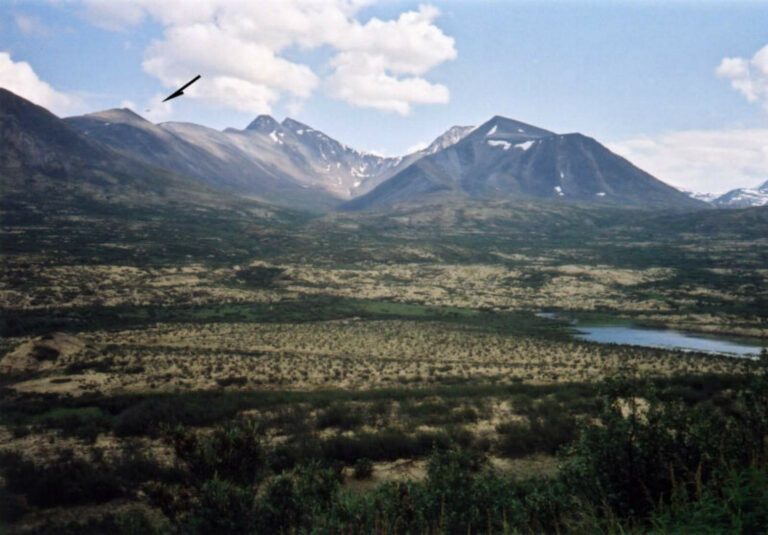On the surface of things, Wednesday’s announcement that the GNWT is kicking $29.7 million over to NTPC to cover the costs associated with low water in the Snare System is a story about the effects of climate change and a government making the tough choices needed to fight it.
That’s certainly the narrative the government is selling: “Despite tight fiscal restraints, the GNWT isn’t going to allow residents to take on the burden of increased demand of diesel for power generation due to historically low water levels,” said Minister Michael Miltenberger in a press release.
It’s a nice line, especially leading up an election where the Finance Minister and the Premier figure on keeping their jobs, as Miltenberger pretty much came right out and said during Wednesday’s press conference: “The goal for us is to provide stability now and to allow us to get past November 23 so we can pick up these challenges immediately following the election.”
However, this narrative, though not necessarily false, obscures the fact that the GNWT doesn’t seem to have a plan for dealing with the North Slave power grid, which has now bled millions from the government for the second year in a row.
Or rather, it has a plan – but that plan consists mainly in commissioning reports and getting NTPC to scour the private sector in search of someone keen on building small renewable energy projects of questionable economic viability. As a backgrounder that accompanied Wednesday’s announcement explained, by the end of 2015 the GNWT would release a discussion paper, develop a report, and develop another discussion paper. Oh, and they’re also going to begin a new resiliency study on one thing after dropping a feasibility study on another thing.
As Range Lake MLA Daryl Dolynny, who came to the press conference, put it: “We have had so many reports on this. I’ve read everything I could get my hands on about this for the past eight years. We’ve had two charrettes. I’ve got enough paperwork to literally wallpaper every room in this building … We know what needs to get done, we’re just delaying the inevitable and not dealing with the issue.”
Plan overboard
To be fair, the Premier recognizes that the status quo “is not sustainable for the long term, especially given the fact that our revenue growth has not kept pace with our expenditures.” And with so little time before the election, should he really be making promises on behalf of the next assembly?
His problem, however, isn’t just a string of low water years. In fact it’s not even clear that the GNWT really believes these water levels are “the new normal,” as Miltenberger called it.
“Current low water levels being experienced in the Snare system are a one in twelve-year event… In the last 10 years more than 95% of the electricity in the Snare system was produced through hydro and this most recent year is an outlier,” was the GNWT’s view in their official response to the energy charrette, released this past June.
Whatever they think about the odds of repeated low water years, focusing on the (no doubt real) environmental challenges allows them to conveniently cruise over another issue: the central tenet of the 17th Assembly’s energy strategy turned out to be a flop.
When the GNWT released its in 2013, it offered a pricey panacea for our energy woes in the form of a transmission line connecting the overburdened North Slave grid to the underutilized South Slave Talston grid, and then on to the continental grid via Saskatchewan or Alberta. The North Slave grid could buy hydropower from the South Slave in the winter instead of burning diesel, new resource projects could link to the grid, and large hydro projects could be pursued based on economic prospects and excess power could be sold down south. Win, win, win.
Unfortunately, when the GNWT got around to doing a feasibility study, it came out the project would cost over $1-billion. And as the report from the 2014 energy charette puts it, “an interconnection between the Taltson and Snare grids appears to be cost-prohibitive unless significant new industrial projects can be connected to help cover the costs” – something unlikely in our current mining climate.
This sent the GNWT back to the drawing board at last fall’s charrette. There, at least according to the charrette’s report, there was “a sense that the GNWT has focused quite heavily in recent years on large energy projects that were potential “game-changers” but did not come to fruition (for a variety of reasons). There seemed to be a general consensus that a move towards smaller, community-scale projects may be the best direction for the GNWT to take.”
Not all sunny
Some of these community-scale projects seem to have worked well in several of the smaller thermal (i.e. wholly diesel-burning) communities; the Premier was keen to point to out the success of the Colville Lake and Fort Simpson solar energy systems. But it’s going to be tough to fix the North Slave hydro grid with small-scale projects. And to focus on several potential wind and solar projects as the answer to NTPC’s repeated diesel-guzzling losses (as McLeod and Miltenberger did on Wednesday) seems disingenuous.
For one thing, it still costs substantially more to produce energy with solar and wind than it does with diesel, even if the cost of both technologies are going down. And as the GNWT’s Power Systems Plan notes, neither power source is possible without subsidies.
This doesn’t mean we shouldn’t invest in wind and solar for social and environmental reasons. But trying to prevent future rate hikes from NTPC by replacing a less expensive energy source (diesel) with more expensive ones (wind and solar) hardly seems like a plan – unless the GNWT is able secure major federal subsidies to make wind and solar significantly less expensive than diesel, as hydropower is.
Moreover, the case for solar, although perhaps not wind, seems reasonably weak in the North Slave. Here, diesel is burned primarily in the winter when solar wouldn’t work as a substitute. And in normal years, the Snare System overproduces during the sunny summer months, even dumping around 25 percent of water at the height of the season.
Reality is expensive
If low water is indeed “the new normal,” the GNWT is going to need to invest in much larger projects to prevent endless subsidies to NTPC. In their response to the energy charrette, two “transformative projects” were suggested for the North Slave: a 13 megawatt hydro project on La Martre River and a 20 megawatt liquid natural gas plant in Yellowknife.
These projects are going to cost a lot of money, which is perhaps why we didn’t hear about them during an election season press conference from a premier and finance minister whose government is strapped for cash. But when they talk about finding “long-term” solutions, it would be nice if McLeod and Miltenberger were more straight-up about the the shortfalls and future needs of the NWT power system.
Now, don’t get me wrong: the GNWT’s move to cover NTPC’s diesel costs for a second year in a row is probably a good thing. Governments have a role to play in protecting people from the negative effects of natural phenomena, and the predicted 25 percent rate hike would have had significant consequences for the cost of living and doing business in Yellowknife and across the territory. But there are bigger issues at play, and we shouldn’t start cheering the GNWT for its beneficence until sufficient investments are made to ensure these payments don’t become an annual thing.







